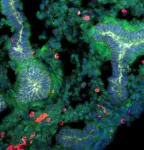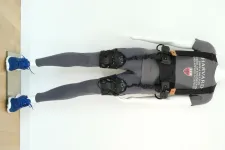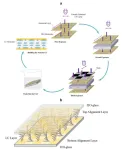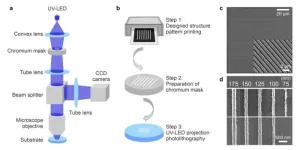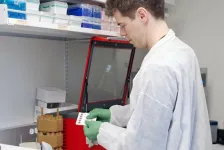Now, Stanford researchers have discovered that the plant-based psychoactive drug ibogaine, when combined with magnesium to protect the heart, safely and effectively reduces PTSD, anxiety and depression and improves functioning in veterans with TBI. Their new study, to be published online Jan. 5 in Nature Medicine, includes detailed data on 30 veterans of U.S. special forces.
“No other drug has ever been able to alleviate the functional and neuropsychiatric symptoms of traumatic brain injury,” said Nolan Williams, MD, an associate professor of psychiatry and behavioral sciences. “The results are dramatic, and we intend to study this compound further.”
Alternative options
Traumatic brain injury is defined as a disruption in the normal functioning of the brain resulting from external forces — such as explosions, vehicle collisions or other bodily impacts. The trauma associated with TBI can lead to changes in the function and/or structure of the brain, which, in turn, contributes to neuropsychiatric symptoms.
Hundreds of thousands of troops serving in Afghanistan and Iraq have sustained TBIs in recent decades, and these injuries are suspected of playing a role in the high rates of depression and suicide seen among military veterans. With mainstream treatment options not fully effective for some veterans, researchers have sought therapeutic alternatives.
Ibogaine is a naturally occurring compound found in the roots of the African shrub iboga, and it has been used for centuries in spiritual and healing ceremonies. More recently, it has gained interest from the medical and scientific communities for its potential to treat opioid and cocaine addiction, and research has suggested that it increases signaling of several important molecules within the brain, some of which have been linked to drug addiction and depression. Since 1970 ibogaine has been designated as a Schedule I drug, preventing its use within the U.S., but clinics in both Canada and Mexico offer legal ibogaine treatments.
“There were a handful of veterans who had gone to this clinic in Mexico and were reporting anecdotally that they had great improvements in all kinds of areas of their lives after taking ibogaine,” Williams said. “Our goal was to characterize those improvements with structured clinical and neurobiological assessments.”
Capturing ‘before and after’
Williams and his colleagues at Stanford teamed up with VETS, Inc., a foundation that helps facilitate psychedelic-assisted therapies for veterans. With support from VETS, 30 special operations veterans with a history of TBI and repeated blast exposures, almost all of whom were experiencing clinically severe psychiatric symptoms and functional disabilities, had independently scheduled themselves for treatment with magnesium and ibogaine at a clinic in Mexico.
Before the treatment, Stanford researchers gauged the participants’ levels of PTSD, anxiety, depression and functioning based on a combination of self-reported questionnaires and clinician-administered assessments. Participants then traveled to a clinic in Mexico run by Ambio Life Sciences, where under medical monitoring they received oral ibogaine along with magnesium to help prevent heart complications that have been associated with ibogaine. The veterans then returned to Stanford for post-treatment assessments.
“These men were incredibly intelligent, high-performing individuals who experienced life-altering functional disability from TBI during their time in combat,” Williams said. “They were all willing to try most anything that they thought might help them get their lives back.”
At the beginning of the study, participants were experiencing clinically significant levels of disability as measured by the World Health Organization Disability Assessment Scale 2.0, which assesses disability in six functional domains, including cognition, mobility, self-care, getting along, life activities and community participation. In addition, 23 met the criteria for PTSD, 14 for an anxiety disorder and 15 for alcohol use disorder. In their lifetimes, 19 participants had been suicidal and seven had attempted suicide.
Life-changing results
On average, treatment with ibogaine immediately led to significant improvements in functioning, PTSD, depression and anxiety. Moreover, those effects persisted until at least one month after treatment — the endpoint of the study.
Before treatment, the veterans had an average disability rating of 30.2 on the disability assessment scale, equivalent to mild to moderate disability. One month after treatment, that rating improved to 5.1, indicating no disability. Similarly, one month after treatment participants experienced average reductions of 88% in PTSD symptoms, 87% in depression symptoms and 81% in anxiety symptoms relative to how they were before ibogaine treatment. Formal cognitive testing also revealed improvements in participants’ concentration, information processing, memory and impulsivity.
“I wasn’t willing to admit I was dealing with any TBI challenges. I just thought I’d had my bell rung a few times — until the day I forgot my wife’s name,” said Craig, a 52-year-old study participant from Colorado who served 27 years in the U.S. Navy. “Since [ibogaine treatment], my cognitive function has been fully restored. This has resulted in advancement at work and vastly improved my ability to talk to my children and wife.”
“Before the treatment, I was living life in a blizzard with zero visibility and a cold, hopeless, listless feeling,” said Sean, a 51-year-old veteran from Arizona with six combat deployments who participated in the study and says ibogaine saved his life. “After ibogaine, the storm lifted.”
Importantly, there were no serious side effects of ibogaine and no instances of the heart problems that have occasionally been linked to ibogaine. During treatment, veterans reported only typical symptoms such as headaches and nausea.
Lessons for PTSD, depression and anxiety
Williams and his team are planning further analysis of additional data collected on the veterans but not included in the current study, including brain scans that could help reveal how ibogaine led to improvements in cognition. They also hope to launch future studies to further understand how the drug might be used to treat TBI.
However, they think ibogaine’s drastic effects on TBI also suggest that it holds broader therapeutic potential for other neuropsychiatric conditions. “In addition to treating TBI, I think this may emerge as a broader neuro-rehab drug,” Williams said. “I think it targets a whole host of different brain areas and can help us better understand how to treat other forms of PTSD, anxiety and depression that aren’t necessarily linked to TBI.”
The study was independently funded by philanthropic gifts from Steve and Genevieve Jurvetson and another anonymous donor. Stanford received no funding from VETS, Inc. or Ambio.
# # #
About Stanford Medicine
Stanford Medicine is an integrated academic health system comprising the Stanford School of Medicine and adult and pediatric health care delivery systems. Together, they harness the full potential of biomedicine through collaborative research, education and clinical care for patients. For more information, please visit med.stanford.edu.
END
